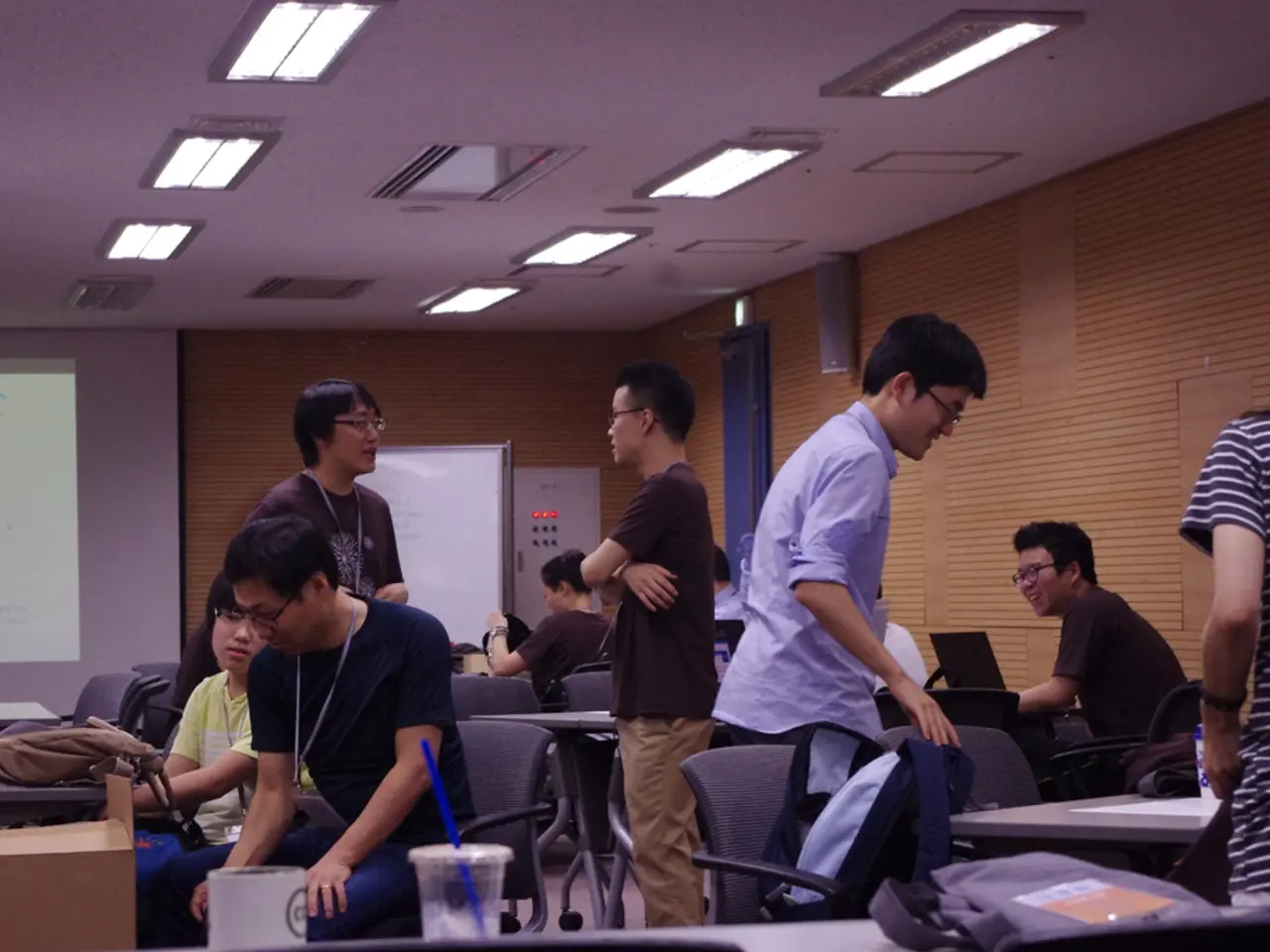Boosting Classroom Learning with Technological Incorporation
In today's digital age, classrooms are undergoing a significant transformation, driven by the integration of technology. This shift is reshaping educational landscapes, fostering a dynamic learning environment that promotes personalized, collaborative, and flexible experiences.
Interactive whiteboards serve as a dynamic canvas for educators, allowing for real-time engagement and collaboration. These tools, along with collaborative platforms like Google Workspace and Microsoft Teams, empower students to work together on projects, regardless of their physical location.
The emergence of trends such as gamification, augmented reality (AR), virtual reality (VR), artificial intelligence (AI), and cloud-based collaborative platforms is revolutionizing the way we learn. Gamification leverages game-based elements to motivate and engage learners, promoting active participation and collaboration. AR and VR transport students into virtual environments to explore complex concepts firsthand, enhancing understanding and retention. AI systems offer 24/7 tutoring, adaptive assessments, and real-time tailored feedback, addressing individual learning gaps.
Mobile and cloud-based platforms facilitate anytime, anywhere access to educational resources, enabling collaboration and blended learning models which mix online and face-to-face instruction. Advanced smartboards and large-format displays, with features like multi-pen support and wireless casting, increase student participation and teacher flexibility, turning classrooms into connected learning hubs.
STEM and coding education emphasis is integrating programming and computational thinking with accessible platforms like Scratch and LEGO Education, preparing students for a technology-driven future.
The future implications of this technology integration include more individualized and effective learning paths, greater equity and inclusion, increased flexibility for students and educators, potential for risk-free skill practice, and ongoing teacher professional development needs. Technology integration equips students with the necessary skills to thrive in a technology-driven society, ensuring they are prepared for future academic and professional challenges.
Case studies show that schools that adopt innovative technologies can enhance student engagement and academic performance through tailored instructional strategies. However, disparities in access to technological resources can hinder the benefits that educational technology offers, particularly among underfunded districts and students from lower-income families. Budget constraints can impede schools from purchasing necessary equipment or software for technology integration, affecting the ability to provide a modern educational experience. Grants, partnerships with technology companies, and community fundraising initiatives can help bridge the gap in funding for technology integration in classrooms.
In conclusion, technology integration is moving classrooms toward more immersive, personalized, collaborative, and flexible learning environments. AI, AR/VR, and cloud platforms play central roles in shaping future education, transforming traditional teaching methods, and promoting a more interactive and engaging educational experience for students.
- Professional development for educators is crucial as they navigate the integration of emerging technologies like AI, AR/VR, and cloud platforms into their instructional strategies, ensuring a seamless and effective transition to modern learning environments.
- E-learning strategies, such as gamification and the use of collaborative platforms like Google Workspace and Microsoft Teams, are vital components of digital citizenship, helping students learn and work together in a connected, technology-driven world.
- The adoption of technology in education, such as interactive whiteboards, smartboards, and mobile and cloud-based solutions, encourages self-development and empowers students to become lifelong learners, equipped with the skills necessary to adapt to the demands of a rapidly changing technological landscape.




